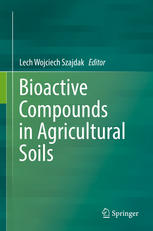

Most ebook files are in PDF format, so you can easily read them using various software such as Foxit Reader or directly on the Google Chrome browser.
Some ebook files are released by publishers in other formats such as .awz, .mobi, .epub, .fb2, etc. You may need to install specific software to read these formats on mobile/PC, such as Calibre.
Please read the tutorial at this link: https://ebookbell.com/faq
We offer FREE conversion to the popular formats you request; however, this may take some time. Therefore, right after payment, please email us, and we will try to provide the service as quickly as possible.
For some exceptional file formats or broken links (if any), please refrain from opening any disputes. Instead, email us first, and we will try to assist within a maximum of 6 hours.
EbookBell Team

0.0
0 reviewsThis volume looks at the impact that different cropping systems and tillage have on soil’s biologically active substances. It considers how phytotoxins accumulate and can inhibit the development of cultivated plants. Coverage explores the continuous cropping of rye, crop rotation, no tillage, and conventional tillage. It offers a comprehensive, comparative approach to allelopathic plant-soil interactions.
The authors focus on free and bounded biologically active substances such as amino acids, auxins, humic and fulvic acids, transient radicals, and enzymes in light sand soils fertilized with different mineral and organic fertilizers.
The chapters address fundamental questions relevant to the environmental challenges we face today and will deal with in the future. The results involve asking basic questions motivated by soil's chemical and biochemical processes. The answers will lead to the improvement of the quality of soil’s organic matter, which, in turn, can lead to increased crop yields.
Readers will come to understand the relationship between ecological processes and environmental change on individual levels of biocomplexity as well as on systems in their entirety. The title is ideal for students and teachers for laboratory practical classes. Soil scientists, biochemists, chemists, plant ecophysiologists, “Natural Products” organic chemists, and other environmental scientists and specialists will also find it useful.